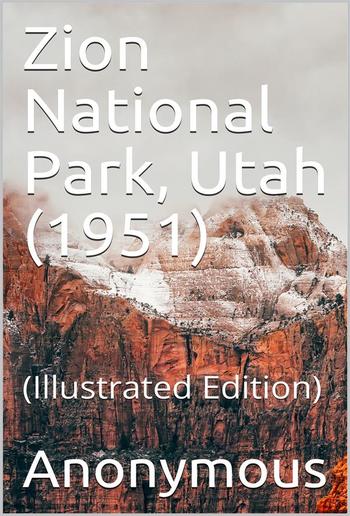
Anonymous - Zion National Park, Utah (1951)
Zion National Park, Utah (1951)
Anonymous
Description
Zion National Park, located in the heart of the spectacular desert and canyon country of southern Utah, has as one of its chief features the great multicolored gorge, Zion Canyon. The sandstone cliffs, rising sheer to form the canyon walls and encircle the valley, are awesome; but it is the vivid coloring which most amazes. The deep red of the Vermilion Cliffs is the prevailing tint. Two-thirds of the way up these marvelous walls and temples are painted varying shades of red; then, above the reds they rise in startling white, sometimes surmounted by a cap of brilliant red.
A prominent feature of the 229-square-mile (590 km) park is Zion Canyon, which is 15 miles (24 km) long and up to 2,640 ft (800 m) deep. The canyon walls are reddish and tan-colored Navajo Sandstone eroded by the North Fork of the Virgin River. The lowest point in the park is 3,666 ft (1,117 m) at Coalpits Wash and the highest peak is 8,726 ft (2,660 m) at Horse Ranch Mountain. Located at the junction of the Colorado Plateau, Great Basin, and Mojave Desert regions, the park has a unique geography and a variety of life zones that allow for unusual plant and animal diversity. Numerous plant species as well as 289 species of birds, 75 mammals (including 19 species of bat), and 32 reptiles inhabit the park's four life zones: desert, riparian, woodland, and coniferous forest. Zion National Park includes mountains, canyons, buttes, mesas, monoliths, rivers, slot canyons, and natural arches.
The geology of the Zion and Kolob canyons area includes nine formations that together represent 150 million years of mostly Mesozoic-aged sedimentation. At various periods in that time warm, shallow seas, streams, ponds and lakes, vast deserts, and dry near-shore environments covered the area. Uplift associated with the creation of the Colorado Plateau lifted the region 10,000 feet (3,000 m) starting 13 million years ago.

